It is not a coincidence that lacquer became the symbol of Vietnamese conventional art. Lacquer is the exploring and developing the technique of manual son ta to lacquer technique.
The history of the lacquer industry

In 1925, due to the old gold-stained paintings and painting panels hanging at Van Mieu Quoc Tu Giam, a foreign artist asked the rector of the Indochine college (which is now the Vietnam fine arts university) to bring Son Ta into the program of research and practice. From that point, lacquer material had constantly been developed from two traditional colours: black and puce, later with more colours such as: gold, silver, crimson, eggshell, shell…
The feature of lacquer painting
The lacquer material was used for only decorating, has become an art material, using conventional colour material of the industry such as crimson, puce as sticking materials, eggshell, shell, silver, gold, clam shell, etc. painted on a black background, step by step bring the grind technique into unique lacquer technique to create true lacquer paintings.
For lacquer painting, the painting technique is quite demanding and random, the paint must be dry, the painting have to be kept in close cabinet and high humidity; we have to grind for the picture to be seen clear.
The main processes of lacquer

It can be said that lacquer only has general principles but different in experience snd techniques of each individual, each family.
The process of bundling is to use alluvial soil or stone powder, mix paint, crush, and then cut paper, close cracks of the wooden board against cracks along the fabric. This process helps the sheet to be waterproof, without termites, and does not depend on the environment that makes the wood shrink. The more careful you handle the sheet, the more prolonging the life of the object to be painted, each lacquer painting has a lifespan of 400-500 years.
The stage of forming sheet is the stage of sticking, pasting colouring materials firstly such as: eggshell, gold, silver,… and then place a lacquer layer to flatter, followed by the colours.
The decorating stage usually be done in close room and surrounded by mosquito-net to avoid wind with the painting techniques of statues and furniture such as: incense, sentence … where the ingredients are needed: golden, silver, to avoid dust on wet paint.
Grinding and polishing: Because the varnish has been stained to paint, the gloss sinks in the color core to create a deep depth of the painting, so after each drawing, it must be sharpened. The ancients used dried banana leaves as scrap paper.
The sharpening stage is the last polishing phase to create the unique feature of lacquer painting. There are some tools for sharpening and polishing such as: grinded coal, tangled hair, rocks, chicken liver, etc.

The art loving community is happy to see the conventional lacquer painting line of the nation has new promise to flourish before the constant creativity of the young artists generation. But most of them feel embarassed when knowing that there are artists who only takes 2-3 years to make dozens of lacquer paintings. That number more or less exposes to us the quality of those paintings. Since due to the traditional way of making lacquer, completing a paintings costs a painter months, even years.
Nevertheless, one thing has to be repeated: The world is interested in Vietnam art because it has the quality of lacquer. The artists who work with lacquer are recognized by the world until now are still loyal to conventional techniques. Despite all the exprolation and creativity of the artists, Vietnamese lacquer paintings only have value when reserving traditional materials and the totally manual procedure.


